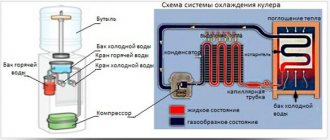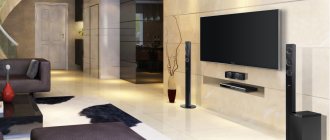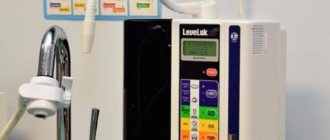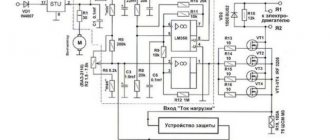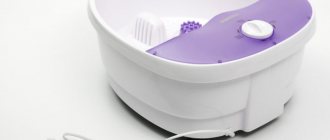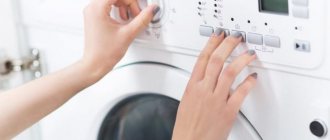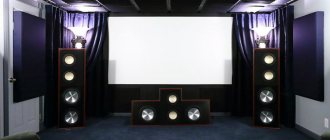What determines the level of energy consumption of a water cooler?
In stores you can see different models that differ not only in appearance, but also in functionality. Most of the presented specimens consume electricity when heating and cooling liquids. With standard parameters, the power of the water cooler when heating is 500 W, and when cooling it ranges from 80 to 150 W.
Several factors influence electricity consumption:
- Model;
- Power of installed equipment;
- Capacity of the installed container for cooling or heating water;
- Cooling system;
- Ambient temperature.
What is the heating power and cooling power of the cooler?
Depending on the installed equipment and additional options, water coolers can be divided according to power consumption:
- Equipment using an electronic water cooling system. Power – 1.5-2 kW/hour;
- Compressor system. Consumes from 1 to 2.5 kW/hour;
- Refrigeration chambers. Power up to 3 kW/hour;
- Dispensers. When used at home, the power is up to 1 kW/hour.
How to choose a cooler?
Buyers may face some difficulties when choosing a cooler. This technique is widely used in offices and is rarely used at home. In order not to make a mistake with your choice and not to purchase a cheap Chinese counterfeit, it is better to opt for products from trusted manufacturers in branded stores and study customer reviews.
Before choosing, you need to decide on a number of parameters.
- Find out the maximum power consumption of the device and compare it with the rated power of the network. You may have to lay a new electrical line.
- Decide on the location of the water dispenser. It should be in a visible place and at the same time not block the passage.
- Depending on the number of employees or family members, decide on the cooling system.
- Choose the cooler design and additional equipment for it: cabinet, refrigerator, glass holders, place for dishes.
- Decide on the method of pouring water.
- Find out if there are service workshops in your city?
- Choose a product with a warranty of at least two years.
One of the significant disadvantages of the units is the widespread use of plastic for drinking water containers. Give preference to dispensers with metal containers made of stainless steel or enameled.
How much electricity does the cooler consume?
The numbers are approximate. With electronic cooling up to 700 Watt/day. With compressor 1.2 kW/day. It all depends on the equipment and use.
To reduce energy consumption, modern models are equipped with an “ECO” mode and a turbo heating function. The use of such innovations allows you to save up to 30% energy compared to models of previous years.
To reduce consumption, the design includes mechanical timers and thermostats. The timer can be configured to the necessary modes for turning on and off the cooler. As a rule, it is designed for a week.
The thermostat prevents overheating. It allows you not to boil water, but to maintain heating at the required temperature. As the temperature approaches 90-95 degrees, the thermostat is activated and the heating elements are turned off.
When the water cools to 86 degrees, the thermostat turns on the heating. When initially turned on, heating occurs within 15-20 minutes. Reducing the water temperature takes a little longer, about 60 minutes.
Review of popular coolers
The popularity of coolers is relative. The Russian market offers products from companies from several countries, including the USA, China, Taiwan, and South Korea.
The United States presented its products ranging from cheap to very expensive - this is the Cooper & Hunter brand.
| Name | Cooper&Hunter H1-LW | Cooper&Hunter CH-V118E | Cooper&Hunter CH-V118D | COOPER&HUNTER H1-LES SILVER |
| Price category | expensive | average | inexpensive | popular |
| Installation type: floor | Yes | Yes | Yes | Yes |
| Cooling | compressor | electronic | No | electronic |
| Bottle location | top | top | top | top |
| Weight, kg | 13,5 | 4,7 | 3,8 | 16 |
| Compressor warranty | 6 years | No | No | No |
| Heating power | 0.5 kW | 420 W | No | 0.5 kW |
| Cooling power | 112 W | 80 W | No | 68 W |
| Heating performance | 5 l/h/90°C | 5 l/h /90-95°C | No | 5 l/h /90-95°C |
| Cooling performance | 2 l/h/10°C | 1 l/h/5-10°C | No | 0.7 l/h (10-15°C) |
| Antibacterial coating | Yes | No | No | Yes |
| Energy saving technology | Yes | No | No | Yes |
| Price, rub. | 9400 | 7800 | 3200 | 8000 |
Comparative characteristics of mid-price coolers from the countries: China, South Korea, Taiwan.
| A country | China | South Korea | Taiwan |
| Name | Ecotronic H2-LE | Ecotronic R1-L | Clover B10 |
| Price category | average | average | average |
| Installation method: floor | Yes | Yes | Yes |
| Cooling | electronic | compressor | compressor |
| Bottle location | top | top | top |
| Weight, kg | 9,5 | 17,5 | 20 |
| Compressor warranty | No | 12 months | No |
| Heating power | 0.5 kW | 0.5 kW | 0,44 |
| Cooling power | 100 W | 100 W | 105 W |
| Heating performance | 5l/h 85-94C° | 5l/h 85-94C° | 8.5 95C° |
| Cooling performance | 2l/h 10-15C° | 3l/h 5-10C° | 3.5 l/h 4-10C° |
| Antibacterial coating | No | No | No |
| Energy saving technology | No | Yes | No |
| Price, rub. | 8500 | 11500 | 12000 |
As can be seen from the above analysis, the price depends on the configuration, design and performance.
How much electricity does a cooler with a refrigerator consume?
In terms of external parameters, equipment with a refrigeration chamber does not differ from other models. The difference in design is the refrigeration chamber installed at the bottom. Depending on the model, the volume can be from 10 to 50 liters.
If we consider the question of how much electricity a water cooler with a refrigerator consumes, then a definite answer is possible. Its amount will be significantly greater than when using a conventional device. Approximately up to 1.5 kW/day Energy is spent not only on heating or cooling the liquid, but also on maintaining the required temperature.
But the use of such structures in a personal office or small production premises allows you to abandon bulky refrigerators and free up space.
Coolers for running water
There are stationary coolers for running water called purifiers. In addition to electricity, they require a water connection to function. They connect to the water supply system, purify the water, heat it, cool it and distribute it. Purifiers are more cost-effective than coolers because you lose dependence on clean water suppliers and do not need reusable containers or water storage space. There is no need for workers delivering 20 liter bottles for replacement.
Tap water filtration coolers appeared after dispensers, evolved and solved the problem with water suppliers. They are much more expensive, larger and more difficult to maintain. In fact, this is a mini-plant for water purification. Purifiers use complex multi-stage water purification from harmful impurities and bacteria.
Purifier device
These water purification devices can be equipped with different purification systems and the price depends on this configuration. Purifiers may have cleaning systems:
- ultrafiltration;
- reverse osmosis;
- UV lamp.
Ultrafiltration is the presence of a four-stage filter system for fine, mechanical water purification. These filters are placed in the path of reverse osmosis filters. Semi-permeable reverse osmosis membranes are highly susceptible to mechanical impurities in the water. They work under high pressure and the task of reverse osmosis is to retain particles up to 0.0001 microns in size. Some nitrate molecules, dissolved nitrate salts, petroleum products, microbes, etc. have this size.
An ultraviolet lamp is additionally designed to remove germs. Water that has undergone consistent purification through such a system actually becomes distilled. To improve its qualities, special cartridges are installed that automatically add useful microelements to the water.
Useful additional functions of purifiers
To improve consumer properties, flow coolers can have:
- carbonation of water;
- ice maker;
- cooling;
- heat;
- storage tank;
- self-cleaning.
To obtain high water cooling performance, compressor cooling units are installed in the design. These household appliances are divided into two groups: small and large productivity. Low productivity is considered to be servicing up to 20 people, and high productivity is considered to be servicing up to 20 people per shift.
Some models are equipped with an LED monitor with a touch control panel. The consumer can independently set the temperature of hot or cold water. Expensive models allow you to program your work several days in advance and turn off on weekends and holidays.
Myths about increased energy consumption
There are several myths that are widespread among buyers. A cooler with electronic water cooling is a more economical option.
In summer, if the ambient temperature is more than 25 degrees, then there is no difference in energy consumption between the models.
When using the equipment, you will have to increase your electricity costs.
When considering this myth, it is worth considering that models are designed for different numbers of consumers. For home use, the power of the water cooler in kW, on a monthly basis, will not greatly affect the total amount.
In offices where there are many people present, the intensity of work can increase the amount of electricity consumed. But even here it should be remembered that coolers do not work constantly, but are turned on only when necessary.
Coolers with thermoelectric water cooling are quieter.
According to the degree of extraneous noise, the system is approximately wound. When the compressor type operates, a motor is used. Incorrect installation may cause additional noise.
Coolers do not boil water, so it can be dangerous. Bottled water is used for the cooler. During production, special equipment is used that allows you to use water even without boiling. Strict control and daily quality checks in our own laboratories help consumers not to worry about its quality.
How to reduce energy consumption
Most devices operate 24 hours a day. But this is not always really necessary. If it is installed on the office premises, then work at night is unlikely to be relevant. If hot water is not needed, the heating can be turned off. Instead of using a cooler, you can use a kettle. Some tips:
During the cold season, it is better to turn off the water cooling;
Turn off at night or on weekends;
When choosing, think about the programming function; Use a plug-in timer to control your electricity consumption.
Compressor or electronic, which consumes more electricity?
Coolers with a compressor version cool water faster when compared to the electronic version. But at the same time, power consumption also increases. It is 20-30% more than with the electronic version.
But each side has pros and cons. If you need an inexpensive model that is located in a clean and ventilated room and does not require ice water, then take a closer look at the electronic system.
If you need a device that is not demanding of existing conditions and will be used by a large number of people, then it is better to purchase a device with a compressor type.
